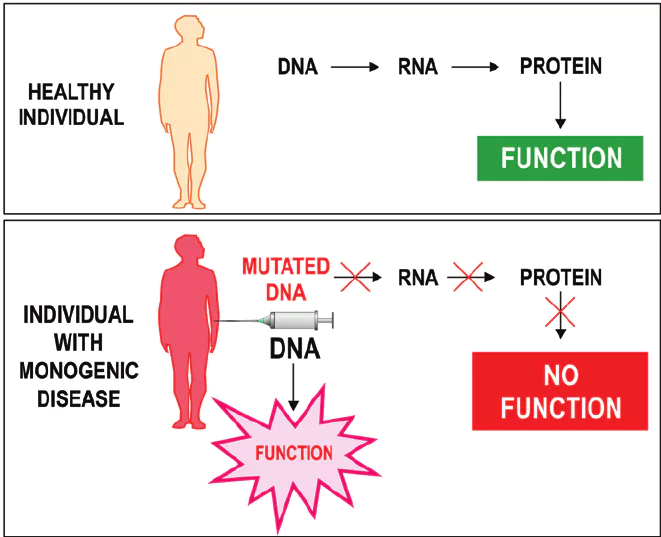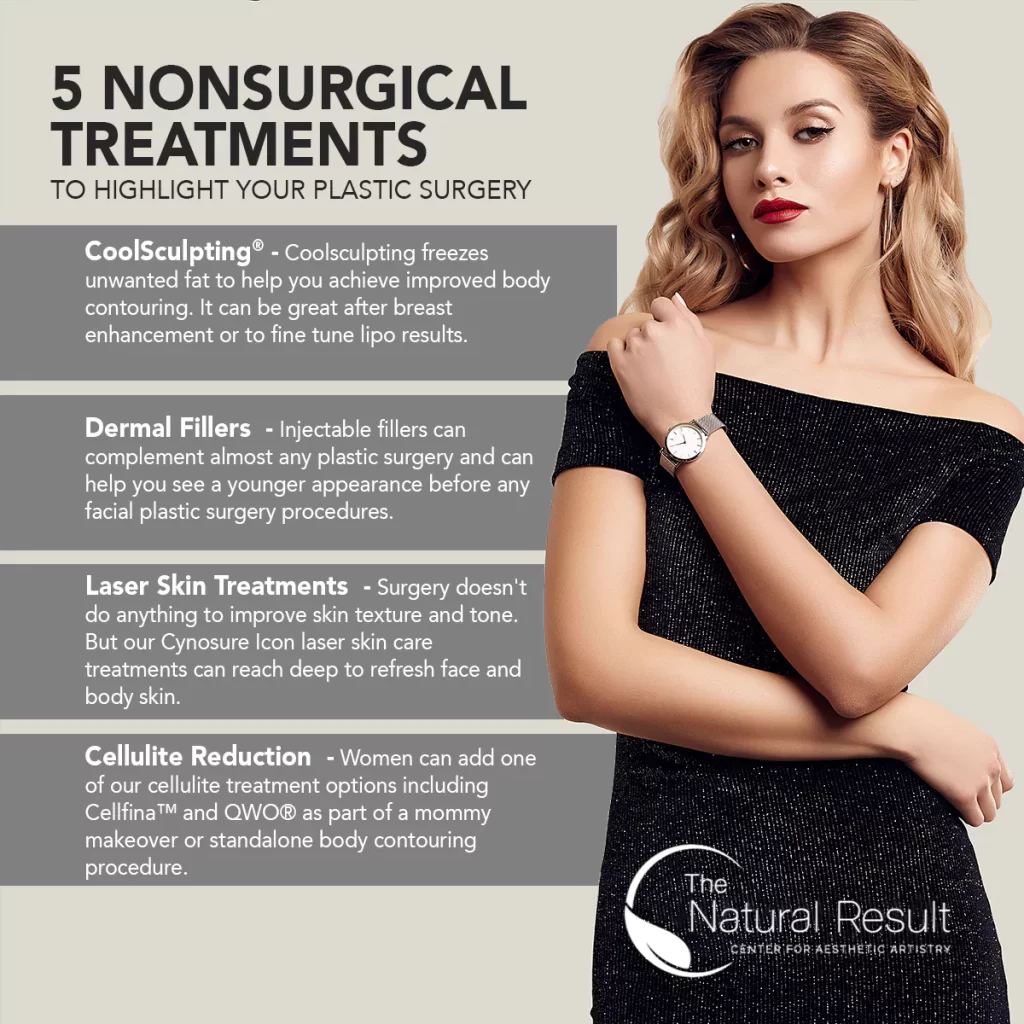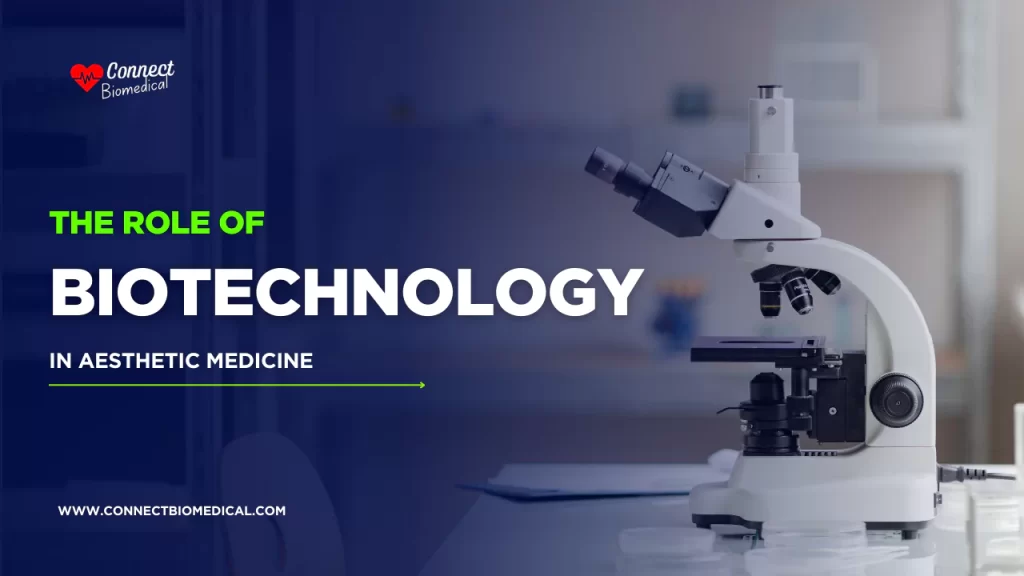Biotechnology and aesthetic medicine are two fields that are directly related to improving the quality of human life. As an advanced science, biotechnology has been able to create new tools for medical and biological changes.
On the other hand, aesthetic medicine focuses specifically on non-invasive treatments and methods that help improve a person’s appearance and feel.
In the collaboration of these two disciplines, we reach new frontiers in medical and aesthetic science that could revolutionize aesthetic treatments.
The intersection of biotechnology and aesthetic medicine not only creates new possibilities for improving treatment methods but can also have lasting effects on the health and quality of life of individuals. In this article, we will examine these two fields and how they interact and analyze the impact of biotechnology on new advances in aesthetic medicine. In the following, the methods and achievements that this synergy has created are examined scientifically and with reference to reliable sources.
Table of Contents
- Definition and Fundamentals of Biotechnology (Understanding Biotechnology)
- The Role of Biotechnology in Aesthetic Medicine
- Practical Applications of Biotechnology in Aesthetic Medicine
- Challenges and Barriers
- The Future of Biotechnology and Aesthetic Medicine
- Conclusion
Definition and Fundamentals of Biotechnology (Understanding Biotechnology)
It is the science of using living organisms, cells, or cell components to produce products and services for the benefit of humanity. This field of life sciences can have many applications in various industries, such as pharmaceuticals, agriculture, medicine, and the environment. Specifically, pharmaceutical biotechnology refers to the production of recombinant drugs, vaccines, and genetic therapies, while medical biotechnology deals with the application of biological technologies to treat and prevent diseases in clinical medicine. Meanwhile, agricultural biotechnology is related to genetic modifications in plants and animals.
Biotechnology has played a very important role in the advancement of medical science. From the production of biological drugs such as insulin and growth hormones to novel applications in cancer and rare diseases, this science has revolutionized medical treatment.
Aesthetic Medicine: Evolution and New Methods
Aesthetic medicine is specifically concerned with non-invasive and minimally invasive treatments to improve the appearance of humans. The field of medicine has seen significant developments in recent decades. Ever since Botox and fillers were introduced to smooth wrinkles, aesthetic medicine has become a popular and growing field. Other methods such as laser therapy, non-invasive facelift treatments, and treatments based on new technologies such as RF (radio frequency) and HIFU (High-Intensity Focused Ultrasound) have also become very popular.
These new methods have become the first choice for many patients because they do not require surgery and a long recovery period. In addition, they are more customizable and can be adjusted based on the individual needs of each patient.
In addition to appearance, cosmetic medicine methods also play an important role in the psychological improvement of individuals.
The result is improved satisfaction with appearance, feelings of self-confidence, and improved mood.
The Role of Biotechnology in Aesthetic Medicine
Biotechnology Products in Aesthetic Treatments: Biotechnology-Based Drugs, Stem Cells, and New Technologies Such as Gene Therapy
Biotechnology has been widely introduced into aesthetic medicine and has brought various products for aesthetic treatments. One of the most important biotechnology products in this field is biotechnology-based drugs that are specifically designed to improve skin quality and rejuvenate it. These drugs include growth peptides and microRNAs that are able to stimulate natural repair processes in the skin.
Stem cells are also widely used in the field of aesthetic medicine. These cells can regenerate and repair damaged skin tissues and can be used effectively in the treatment of wrinkles and even the repair of wounds and scars. In addition, gene therapy technology has also entered the field of aesthetic medicine. This technology allows doctors to delay the aging process and even treat some genetic skin conditions by modifying specific genes in skin cells.
Rise of Stem Cell Therapies in Aesthetics
• What specific research data says:
Using stem cells in aesthetic treatments: Studies have shown that adipose-derived stem cells have shown promising results in treating hair loss and skin rejuvenation. These cells have gained attention in aesthetic medicine due to their ease of collection and abundance. Frontiers+1PubMed+1PubMed
Gene therapy treatments for skin rejuvenation: Recent research has shown that gene therapy treatments can reverse the effects of skin aging. For example, treatment with targeted ATF3 mRNA can reverse the effects of skin aging by regulating specific cellular mechanisms. .BioRxiv
Using polynucleotides in wound healing: Studies have shown that the use of polynucleotides (PN) around the surgical site can improve wound quality and reduce wound width. PMC
Personalized beauty: How biotechnology technologies are being used to create treatments tailored to an individual’s genetic and physiological characteristics
Using biotechnology, doctors are able to design aesthetic treatments based on an individual’s genetic and physiological characteristics. These techniques offer treatments that are completely tailored to each individual’s specific needs rather than using standard, generic methods.
For example, genetic analysis can predict how an individual will respond to various cosmetic treatments. This data can help doctors choose the best possible treatment for the patient. Biotechnology technologies also help create unique cosmetic products for each individual, which increases the accuracy and effectiveness of the treatment.

Source: Researchgate.net
New Studies and Research: A Review of New Research in the Field That Shows the Positive Impact of Biotechnology on Cosmetic Treatments
New research in the field of cosmetic medical biotechnology shows the positive impact that this science has had on cosmetic treatments. For example, a study in the Journal of Gene Therapy showed that genetic therapies can significantly reduce wrinkles and improve skin elasticity (Smith et al., 2024). Other research emphasizes the use of stem cells in skin tissue repair and the treatment of acne or injury scars (Johnson & Wang, 2023).
These studies show that new biotechnology technologies are clearly capable of improving the outcome of cosmetic treatments and reducing the side effects of older treatments.
Biotechnology Applied to Cosmetics and Aesthetic Medicines:
Statistics related to medical Biotechnology
• In 2022, the global biotechnology pharmaceutical market was valued at approximately $263 billion and is projected to reach approximately $566 billion by 2032, with a compound annual growth rate of 8.2%.Market.us Media
• Success rates in Phase I clinical trials have been reported to be around 16%, in Phase II around 10%, and in Phase III around 25%.
Practical Applications of Biotechnology in Aesthetic Medicine
Examples of Everyday Applications of These Technologies in Aesthetic Medicine
Biotechnology has a direct impact on aesthetic treatments and is used in practice in many everyday treatments. One of the prominent applications of stem cells in aesthetic medicine is skin rejuvenation. This process is associated with the renewal and repair of skin tissues and the reduction of skin wrinkles.
Genetic therapies used to correct genetic skin problems such as pigmentation or inflammatory skin disorders (such as psoriasis) that become long-term skin problems are also expanding. In addition, biotechnology lasers such as fractional CO2 lasers are used to treat skin scars and remove skin lesions and have had very effective effects.
Impact of these methods on treatment outcomes and patient experience
The results of these technologies in aesthetic treatments ( Non-invasive treatments ) not only have a positive impact on reducing treatment time and recovery time but also significantly increase patient satisfaction. Non-invasive treatments provide a more comfortable experience for patients due to the lack of surgery and rapid recovery. In addition, these treatments can be designed more precisely and tailored to the needs of each individual, which significantly improves treatment outcomes.
Case studies or experiments
Case study on the use of stem cells in the treatment of hair loss
In a clinical study, stem cells derived from adipose tissue were used to treat hair loss. The results showed that this treatment stimulated hair growth and improved hair density in the treated areas.
Gene therapy treatment for genetic skin diseases
In a clinical case, gene therapy treatment was used to treat a genetic skin disease. In this study, genetically modified skin cells were used to repair the patient’s skin, which resulted in significant improvement in the patient’s skin condition.

Challenges and Barriers
Ethical, legal, and social challenges in the use of biotechnology in aesthetic medicine
Despite the enormous advances in biotechnology and aesthetic medicine, there are also many ethical and legal challenges in this field. One of the main issues is the patient’s consent to the use of new technologies such as gene therapy or stem cells. Many people may be concerned about the long-term effects of these treatments on their health.
In addition, the legal issues surrounding the use of genetic material and corrective treatments are still not fully resolved in many countries. This could lead to unauthorized or improper use of these technologies.
Scientific and technical barriers to further expansion of these technologies
One of the major barriers to further expansion of biotechnology technologies in aesthetic medicine is the high costs of research and development of these technologies. Also, there is a need for specialized training for doctors and dermatologists to apply these treatments on a large scale.
Health and safety concerns in the use of biotechnology methods
The use of biotechnology technologies in aesthetic medicine may be associated with safety concerns. For example, cell and genetic therapies may be associated with unexpected side effects, such as the development of allergic reactions or infections from injections. These safety issues can be an obstacle to the widespread acceptance of these treatments in the medical community and the general public.
The Future of Biotechnology and Aesthetic Medicine
Future Forecast and Emerging Trends in These Two Fields
Given the rapid and dramatic developments in the fields of biotechnology and aesthetic medicine, these two fields will rapidly merge further and progress toward individualized and personalized treatments. In the future, we will see an increase in the use of gene therapy and stem cell methods, which, in addition to improving aesthetic conditions, will help treat chronic skin problems and skin aging. Gene-based therapies, which are currently in the experimental stages, could one day become the main method of treating genetic skin problems.
Potential Impact of New Advances in Biotechnology on the Beauty and Health Industries
New biotechnological advances could significantly impact the aesthetic medicine industry. Biotechnology-based drugs that are specifically produced to improve skin characteristics may become routine treatments in beauty clinics in the future. Also, with the completion and expansion of the use of stem cells, skin rejuvenation and regenerative treatments may become a common and less expensive procedure.
Use of artificial intelligence, nanotechnology, and other innovations in this field
In the near future, artificial intelligence and nanotechnology will play important roles in aesthetic medicine. With the use of artificial intelligence and machine learning algorithms, faster diagnoses and more customized treatments can be provided.
For example, It can more accurately simulate the characteristics of an individual’s skin and recommend the best available treatments.
On the other hand, nanotechnology in the field of skin treatments can increase the precision of treatments so that active ingredients can easily penetrate deeper layers of the skin and have a greater effect.

Conclusion
A final comment on the future of this field and the importance of further research
The future of biotechnology and aesthetic medicine is full of exciting possibilities and innovations. With scientific advances and new technologies, these two fields will be able to transform quickly into non-invasive and safer treatments that will impact people’s quality of life. However, further research and development of scientific and ethical standards are still needed to ensure that these technologies are widely used with complete safety and positive outcomes.
Author:
Dr. Sanaz Bellucci is a healthcare professional and medical content creator with a background in dentistry. She is the founder of DrHealthAndBeauty.com, an evidence-based magazine covering health, wellness, and aesthetic medicine. Her work bridges the gap between scientific research and everyday health decisions, providing readers with reliable, up-to-date insights.




